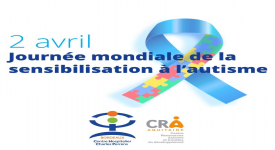Differences in mid-gestational and early postnatal neonatal cytokines and chemokines are associated with patterns of maternal autoantibodies in the context of autism
Cereb Cortex. 2024 May 2;34(13):50-62. doi: 10.1093/cercor/bhae082.
ABSTRACT
Associations between maternal immune dysregulation (including autoimmunity and skewed cytokine/chemokine profiles) and offspring neurodevelopmental disorders such as autism have been reported. In maternal autoantibody-related autism, specific maternally derived autoantibodies can access the fetal compartment to target eight proteins critical for neurodevelopment. We examined the relationship between maternal autoantibodies to the eight maternal autoantibody-related autism proteins and cytokine/chemokine profiles in the second trimester of pregnancy in mothers of children later diagnosed with autism and their neonates' cytokine/chemokine profiles. Using banked maternal serum samples from 15 to 19 weeks of gestation from the Early Markers for Autism Study and corresponding banked newborn bloodspots, we identified three maternal/offspring groups based on maternal autoantibody status: (1) mothers with autoantibodies to one or more of the eight maternal autoantibody-related autismassociated proteins but not a maternal autoantibody-related autism-specific pattern, (2) mothers with a known maternal autoantibody-related autism pattern, and (3) mothers without autoantibodies to any of the eight maternal autoantibody-related autism proteins. Using a multiplex platform, we measured maternal second trimester and neonatal cytokine/chemokine levels. This combined analysis aimed to determine potential associations between maternal autoantibodies and the maternal and neonatal cytokine/chemokine profiles, each of which has been shown to have implications on offspring neurodevelopment independently.
PMID:38696596 | DOI:10.1093/cercor/bhae082




